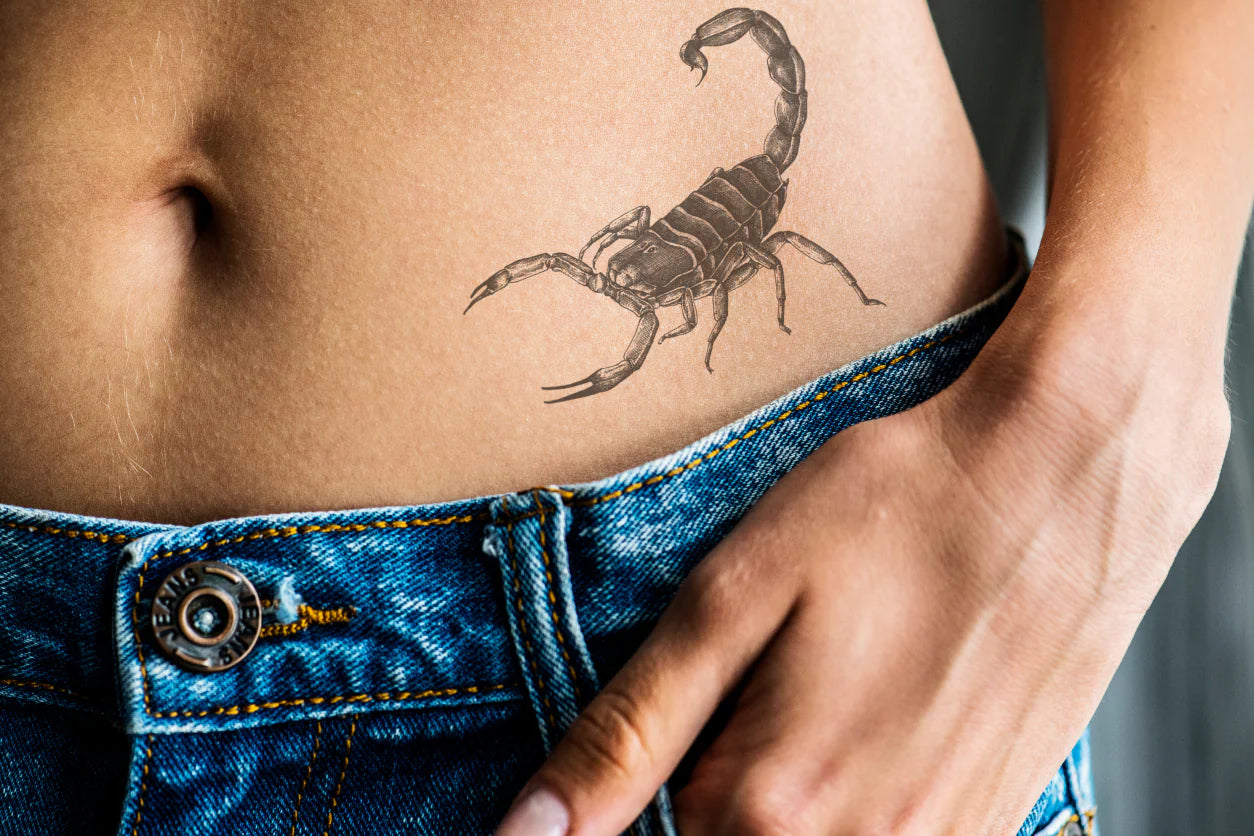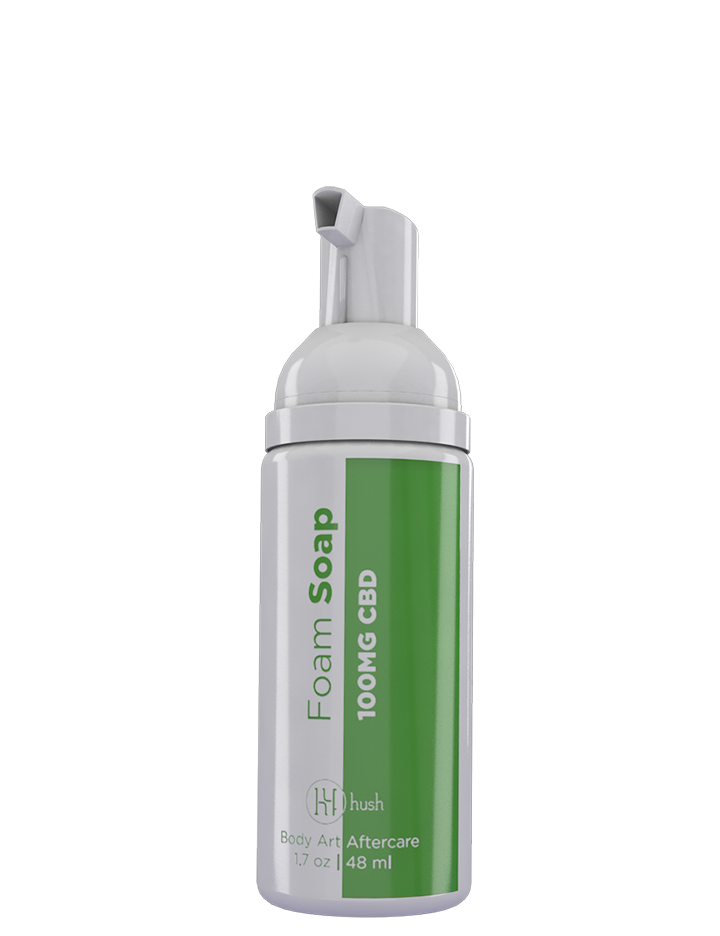
$45.99
Key Takeaways:
- Scorpion tattoos can have tons of meanings, including power and protection, danger and intensity, sexuality and seduction, and resilience and survival. These meanings vary based on different cultures, religions, and where you are from.
- You can get a scorpion tattoo in almost any style, but the most popular include neotraditional, fine-line, and black and grey.
- If you’re worried about the pain of getting a scorpion tattoo, you can use a number of techniques to calm the ouch factor. Numbing creams and gels can make a huge difference.
Scorpions are edgy, mysterious, and just a bit intimidating. Whether you’re toying with the idea of getting a scorpion tattoo or just curious about what they mean (spoiler: it's a lot more than just “cool and dangerous”), we're here to unlock the mysterious secrets of the scorpion symbol.
Let’s dive into the sizzling, stinging, and surprisingly soulful world of scorpion tattoos.
Why the Scorpion? A Tiny Creature With Big Energy
Scorpions are not here to play. These armored arachnids have survived for hundreds of millions of years. That's right: scorpions, just like spiders, are arachnids. When you get a scorpion tattoo, you’re adopting the symbol of an ancient, undefeated, desert-hardened power that has outlasted since the era of dinosaurs.
Scorpions symbolize strength, mystery, and a healthy respect for boundaries. They’re basically the introverts of the animal kingdom. They're calm and respectful of other creatures until they're meaningfully provoked. Then, they prove just how well-versed they are in the art of self-defense.
Cultural and Historical Context of Scorpions
Scorpions have been symbols of protection and mystery in many ancient cultures. They're deeply rooted in Egyptian mythology. The goddess Serqet (Selket) was a scorpion goddess who protected the dead and was associated with healing venomous stings.
In various African traditions, the scorpion symbolizes transformation, death, and rebirth. Scorpions have been symbols of power for hundreds of years, with scorpions prominently featured on relics held by status symbols in African empires.
Scorpions are seen as powerful totems in Native American culture, representing healing, control over darkness, and primal instincts.
The Symbolic Meanings of Scorpion Tattoos
Scorpion tattoos can be used to represent many different ideas and concepts. They can also be used to represent the idea that scorpions look cool and you love them enough to get a tattoo of one. It's good to explore the cultural contexts of a tattoo's meaning, but keep in mind that the art on your body can mean whatever you want it to mean.
Power and Protection
Scorpions are small but mighty. A scorpion doesn’t need to roar or stomp around to be respected because it’s lethal with just a flick of its tail. Because of this, scorpion tattoos are often seen as symbols of personal power and protection. It’s like saying that you may appear small and unassuming, but you have disproportionate strength.
This is especially powerful for people who’ve been through things. Trauma, survival, growth, and journeys that empower through overcoming adversity can be represented by a scorpion.
Danger and Intensity
There’s a definite territorial energy to scorpions. With one look, people know it’s not the animal to provoke, and that’s part of the appeal.
A scorpion tattoo can signal intensity, a fiery temperament, or someone who has that magnetic, dangerous charm. Think femme fatale, tortured artist, or brooding antihero from an indie movie. You get the vibe.
Sexuality and Seduction
Scorpions don’t just sting, they sway. During mating, they perform an elaborate dance that’s kind of romantic, kind of aggressive, and totally Scorpio. The astrological sign Scorpio takes major symbolism from the animal. Scorpio is ruled by Pluto (the planet of transformation and power) and Mars (the planet of sex and war).
People with scorpion tattoos often embrace the raw, passionate, magnetic energy that the animal represents. Sensual but guarded. Hot, but with boundaries. Spice with a little sting.
Resilience and Survival
Scorpions can survive in deserts, under rocks, and in harsh conditions. They have for millions of years.
That makes them a perfect symbol for resilience and adaptability. They don't need much to thrive and are always prepared to protect themselves. They're like lethal minimalists, and their foundation is completely unshakeable. If you've lived through the worst, you might feel a little like a scorpion.
Scorpion Tattoo Styles
Now let’s talk about style. Are you going for mystical sage energy or clean-line minimalist danger master? The way you present your tattoo is the way you're allowing it to tell its story. Combining style with symbolism is exactly what makes each piece of art unique.
Realistic or Black & Grey
Hyper-detailed scorpions that look like they could crawl right off your arm. These give major dark warrior vibes. Realistic tattoos are works of art on par with classical oil paintings. Most people place realistic tattoos in highly visible areas because they want everyone to see them.
Minimalist Line Work
Small tattoos pack the same amount of meaning as large tattoos. Minimalist scorpion tattoos are popular among people who are Scorpios or who want to honor a special Scorpio they love. Minimalist tattoos look great on fingers, behind your ear, or on the back of your neck.
Neo Traditional
Bold lines, vibrant colors, and a vintage flash tattoo vibe. Think old school cool with a touch of rebellion. Often paired with flowers, daggers, or hearts.
Tribal or Geometric
Scorpions rendered in symmetrical or tribal shapes are striking and spiritual. These often reflect a deeper cultural meaning or connection to nature. It's worth exploring tribal or geometric designs if the scorpion symbol holds very deep personal significance.
Scorpions Sting, but Tattoos Don’t Have To
If your scorpion is going to be your first tattoo, you may have some reservations about the process. Namely, you probably feel iffy about the pain factor. Good news! You don’t have to. Save the sting for the scorpion. HUSH tattoo numbing cream is designed to take the sting out of your tattoo.
Slather it on the area and wrap it up about an hour before the appointment. When you’re ready to sit in the artist’s chair, remove the wrap and wipe away the excess numbing cream. Your canvas will be perfectly primed for a scorpion tattoo with as little pain as possible.
FAQs
What's the least painful spot to get a tattoo?
Artists and tattoo-havers may answer this question differently, but many agree that the forearm is one of the least sensitive places to get tattooed. There is fat, thick skin, and few nerve endings, giving it a low score on the tattoo pain chart.
What's the worst tattoo pain?
While there are many spots that will hurt a bit more, the most painful tattoo spots include:
- Armpit
- Rib cage and stomach
- Collarbone
- Elbows
- Knees
- Shins
- Ankles and feet
Is a scorpion tattoo bad luck?
The answer to this really depends on your own beliefs, but many believe the scorpion symbolizes quite the opposite. In ancient Egyptian mythology, scorpions were linked to the goddess Isis, representing protection, healing, and fertility. In Chinese and Japanese cultures, scorpions are believed to protect against evil spirits and bad luck, symbolising bravery and guardianship.
Final Thoughts: Should You Get a Scorpion Tattoo?
If you’re considering getting a scorpion tattoo, ask yourself what you want it to say. If you find that the symbolism is important to you, a scorpion is a great choice. Keep in mind that you have the freedom to get a tattoo of anything you want. If the symbolism doesn't necessarily work, it doesn't matter. As long as it makes you happy, it's the right choice.
If you want your scorpion tattoo to make you happy forever, you need to take great care of it. The HUSH tattoo aftercare kit contains everything you need to keep your scorpion tattoo vibrant and crisp for decades. Leave the scorpion care to us.
Sources:
Fossil is the oldest-known scorpion | Ohio State University
Ring with Scorpion (mpetea) | Akan peoples, Asante | The Metropolitan Museum of Art
Fatal Attraction: Dance of the Scorpions | Silvergrass Institute





